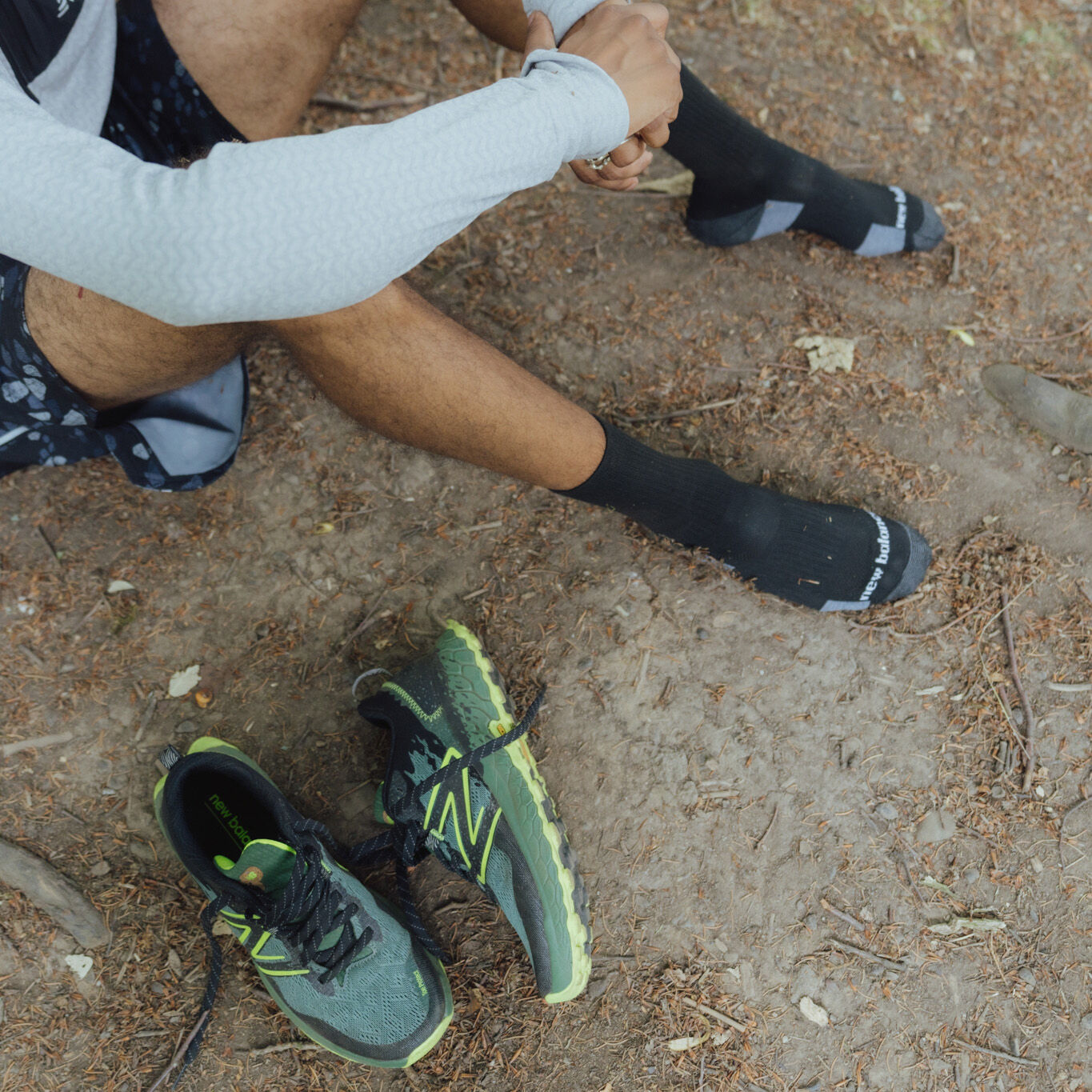
What is a good run pace?
Defining a ‘good’ run pace really all depends on your own personal situation. If you’re just starting out, your ‘good’ is going to be different to someone who’s more experienced. So, instead of focusing on what a good pace is – it can help to think about what a realistic target for you in terms of the time would be it takes you to complete a certain distance. If you’re a beginner looking to do a 5k for example, that might be around the 35-45 minute mark. Let’s say you wanted to aim to complete it in 40 minutes. To do so, you’d need to run at a pace of 12 minutes and 52 seconds per mile – or eight minutes per kilometre.
If you’re more experienced, you could probably aim for around 20-25 minutes for a 5k. But this is subjective, and it all depends on
several different factors, from your own personal fitness levels to the terrain you’re running on and even the weather on the day. Our run pace chart below will help you work out how fast you need to run each mile or kilometre to achieve your target.
How to calculate your running pace
To calculate your running pace, simply divide run time by distance covered. So, say you ran three miles in 30 minutes – that would be:
30 ÷ 3 = 10
In this case, your running pace would be 10 minutes per mile.
How to pace yourself when running?
There are a few different well-known pacing strategies for races, and there are also some useful techniques you can use to improve your pacing in general. First, though, you’ll need to work out what your race pace needs to be to achieve your goal. You can use do this by looking at our running pace converter below, or you could check out a 5k, 10k, or marathon pace calculator online (you’ll find plenty of these with a quick search).
The idea is that you work out what time you want to finish your race in, then figure out what pace you need to run at to achieve that. This can then inform your training. Let’s take a look:
Running pace strategy 1: Run even splits
This pacing strategy is where you keep your pace relatively consistent through an entire race. So, if your running pace goal is nine minutes per mile, you’d aim to run every mile in about nine minutes. If you’re quite new to running or racing, this strategy can help you manage things on the big day as it’s best suited to those who aren’t quite sure what they’re capable of yet.
Even if you’re not so new to running, this can be a good strategy for longer races and marathons where you don’t want to overdo things too early on. Essentially, running even splits is the ‘play safe’ option of racing strategies (although that by no means equates to an easy race!).
Running pace strategy 2: Run negative splits
This running pace strategy involves giving yourself a speed-boost towards the end of the race. You start out running your goal race pace in even splits, like above. But you then aim to run faster for the last 15 percent or so of the race. It’s a strategy that’s commonly used by athletes and hobby runners alike and is best suited to mid distance races. The beauty of it is that it’s low on risk, as you’ll be running at your goal pace anyway for the majority of the race. Then,
you can see if you’ve got enough energy to take yourself that extra mile as the finish line approaches.
Running pace strategy 3: Take a risk – start out fast
This is a pacing strategy that should only be used by experienced runners who are in good shape. It’s riskier than running even or negative splits – but sometimes you’ve just got to grab the race by the (air) horns and see what you’re capable of, especially if you’re hell-bent on setting your PB.
The strategy involves starting out fast (say, 5-15 seconds faster per minute than your goal race pace), then checking in with yourself to see how you’re feeling around two-thirds of the way through the race. If you’re feeling good, you can keep up your fast pace until the end of the race, or as long as is possible. If you’re flagging, you should slow down a little but try your best to get to the end without slowing too much. It’s definitely a live-life-on-the-edge kind of situation. But it could be oh-so worth it when you realise what you’re really capable of.
How to pace yourself when running – useful tips
• Tune into your breath: If your breath is very laboured, it’s probably a sign you should slow it down for a while. A steady pace should see you taking in a nice easy breath every three or four strides, then breathing out for the next three or four strides.
• Ease in slowly: If you’re quite new to running, it’s important not to start your races out too fast. You’ll find you’re able to get better results by easing in at a slightly slower pace, then speeding up later on if you need to.
• Wear the right gear: Nothing kills a race pace like uncomfortable shoes or clothing. Aim for race-friendly running shoes that are ultra-lightweight and cushioned. And opt for technical running clothing that’s designed specifically to help you stay cool, dry and unhindered on the day.



Running pace chart
Use our run pace chart to work out what min/km or min/mile pace you need to aim for to reach your target. You can also use this chart to convert min mile to min KM. It’s split into three sections for ease of use. Benchmarks are highlighted for each distance.
Pace chart section 1: fast pace
02.52 min/km – 03.29min/km
This section takes in the fastest speed of 02.52 min/km or 04.36 min per mile (which would get you a new world record 02.00.34 marathon finish if you held that pace!) down to 3.29min/km or 05.37 min/mile (which would still deliver a fantastic 02.27.12 marathon time).
Pace chart section 2: medium – fast pace
03.31 min/km – 04.46 min/km
Here’s what you can achieve in the next bracket of pace timings, ranging from 03.31 min/km (05.39 min/mile) down to 04.46 min/km (07.40 min/mile). Get set – go!
Pace chart section 3: medium – slower pace
04.48 min/km – 07.30 min/km
The final section of our chart covers all pace times from 04.48 min/km (7.43 min/mile) through to 07.30 min/km (12.04 min/mile). Take your pick and find your goal time!
Let's run!
From choosing the right pacing strategy to wearing high-performance race running clothing and shoes – it’s the finer details that could make or break your PB. By paying attention to these, you’ll be giving yourself the best possible chance at success. Then, all that’s left to do is to take a breath, listen to your body, and let the race flow through you. You’ve got this!



